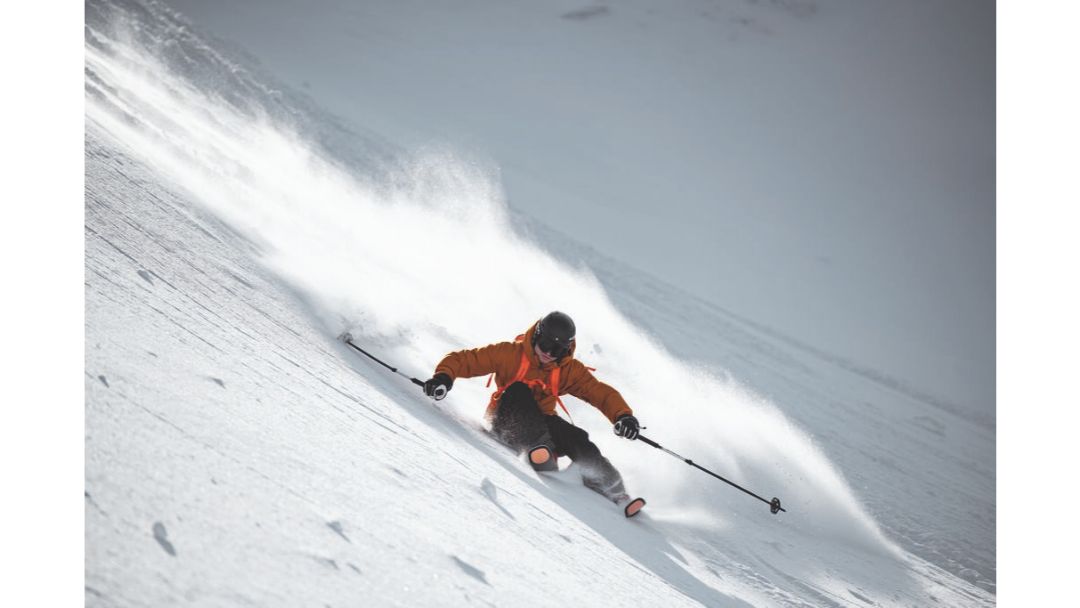Overview
Kästle isn’t what it used to be, and that’s a good thing.
Not to dis the current Kästle’s ancestry, but Kästles of yore could be clumped in two camps: race skis it took a god like Zurbriggen to bend, and kooky creations that should have been euthanized in development, like the Echo Thesis and B-52. All of which has little intersection with the Kästle of today except that both have a dominant strain of Austrian DNA and the new Kästle has re-occupied the founding factory in Hohenems.
The current Kästle camp relies on modern execution of a traditional construction, with a signature damping system called Hollowtech adorning every tip. Colorful Hollowtech inserts catch both the eye and the snow, as they’re meant to dissipate shock faster than a conventional shovel. Not many brands are concerned with early contact any more, but a ride on the latest iteration of the venerable MX83 will remind you not only of what camber does, but why you ski.
Kästle has moved back into the facility in Hohenems where Anton Kästle created the first skis to bear his name, where its engineers can concoct prototypes and execute small production runs. But this detail, while redolent with misty-eyed history, buries the lede: Kästle’s new owner, ConsilSport, has its own plant in the Czech Republic to handle the brand’s production. The 20/21 season was the first in over two decades to see in-line Kastle skis produced in a Kastle-owned facility.
As recently as three years ago, the core of Kästle’s Alpine line was segmented into three series: the cambered MX series of Frontside carvers, the abundantly rockered FX series of all-mountain skis and BMX Big Mountain models. In 2020, the BMX name was eliminated in favor of extending the FX family into its turf.
Once upon a time, Kästle made a women’s ski named Vogue; in 2020, it revived the Vogue name to serve as an umbrella for three women-specific models, the DX73 W, DX85 W and FX96 W.
Because Kästle cuts no corners, its skis customarily command a premium at retail. This means most skiers will never know what they’re missing. It also helps explain why Realskiers’ testers can’t wait to ski them year after year. They don’t get re-skied because testers forgot how they skied; they’re re-skied every year because skiers can’t forget how incredibly they ski. It’s like a designer drug (one imagines): once you try it, you’re hooked.
The seeds of the 2022 season were planted in 2018, when ConsilSport, a Czech manufacturer owned by former ski racer Tomáš Němec, acquired a majority stake in Kästle. Two years ago, production moved to the Czech factory in Nové Město na Moravě, while Kastle maintained offices and a limited production capacity at the brand’s original site in Hohenems, Austria.
Building one’s own skis may not sound like a bold move, but the MX83, MX88 and MX98 aren’t just well remembered by the skiers who once rode them; they’re revered. If the new versions didn’t live up to expectations, the ramifications for the brand weren’t likely to be pretty. So Kastle fans should be reassured that the first MX models to issue from the Czech facility were first-rate in both design and finish. Kästle’s enraptured fan base won’t be disappointed by the revived MX83 and MX88, and the latest MX98 is better than its venerated namesake.
If you’ve never skied a Kästle before, any of the MX’s will make an excellent first impression. The MX series’ current construction uses poplar in lieu of silver fir in the core, so they’re a bit lighter now, but two stout layers of Titanal and fully cambered baselines keep them welded to the snow. Because of their Old School design, the MX’s have a different snow feel than the rockered baselines and tapered sidecuts that dominate current all-mountain ski design. For skilled skiers who don’t need help with their technique, demoing a Kastle MX model is a dangerous thing to do, for once you experience their exquisite connection to the snow, you will have to have it.
Kästle is keenly aware that its prices are above the market norm, so last year it created the ZX108 so skiers who aren’t fiscally flush could afford to ride a Kästle on powder days. The ZX108’s MSRP of $749 is right in line with other top Big Mountain models, bringing Kastle quality within reach of the less affluent.
The 2022 Season
The big news at Kästle this year is its reconceived FX off-trail series, but I’m more excited about what Kästle is up to further down its product line. Last year, Kästle trailed a toe in relatively low-priced waters with the ZX108, which I’m pleased to confirm is an outstanding ski. This year, the ZX100 plays the same role in a more useful shape for everyday skiing. Simply put, it’s a gas.
The new Czech plant must have an affinity for assembling skis without Titanal, because the returning PX81 handles with the authority of a metal laminate ski without the heft. Like the ZX models, the PX81 is competitively priced ($750), with a suitable Tyrolia binding included in the tariff. There are lots of worse ways to spend 750 bucks on a user-friendly Frontside ski. For the first-time buyer who plans to spend most of his time on-piste, the PX81 is a steal.
The new FX series represents a return to traditional values. The construction is classic Kästle: poplar and beech in the core’s center, Paulownia instead of beech over the edge, all sandwiched between twin layers of Titanal and glass. What makes this amalgam suitable for off-trail pursuits is an amply rockered baseline (320mm of rise in the tip, and 230mm at the tail of the FX96 Ti), a low camber line and a tapered tip and tail. Each of the 3-model series is partial to the loose snow found off trail, with the FX96 Ti exhibiting the best balance between bite on hard snow and drift off-piste.

